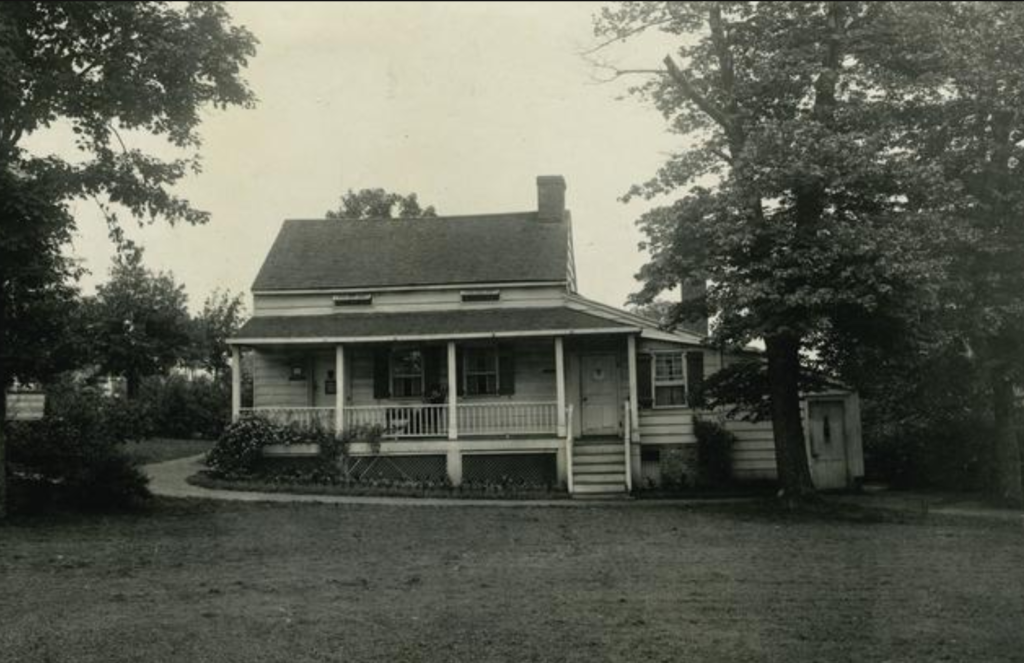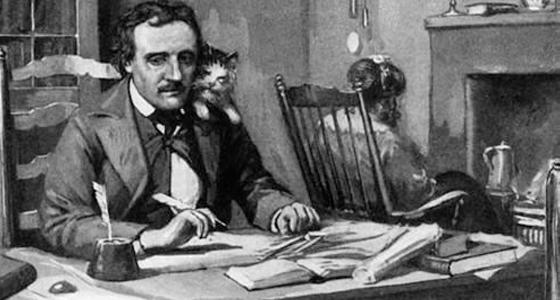
Many historians and fans of Edgar Allan Poe are no doubt familiar with Catarina, the cat who served as Poe’s muse while he was living in his old cottage in Fordham. But I bet you’d be hard-pressed to find many people, if any at all, who know about Jig or the other black cat of Poe Cottage.
Thanks to a lengthy article about the cottage in The New York Times in 1915, we do have proof that Jig lived in the famous Poe Cottage 70 years after the death of Caterina. An article in the Kansas City Star in 1905 also provides proof that at least one other black cat lived at the cottage.
Edgar Allan Poe, who spent many years in New York City in the 1830s and 1840s, was one of many writers of this period who received inspiration from a feline. Poe, who wrote “The Black Cat” in 1843, had at least two cats in his lifetime: one, a female he described as “one of the most remarkable black cats in the world,” and the other, a cat named Caterina who served as his muse while he was living in the Bronx.
Caterina, described as a large tortoiseshell cat, would often sit and purr on Poe’s shoulders as he wrote. She also served as a companion for Poe’s wife, Virginia, during the woman’s final years. Caterina would often lie in the bed with her to help keep her warm in the cold Fordham cottage.
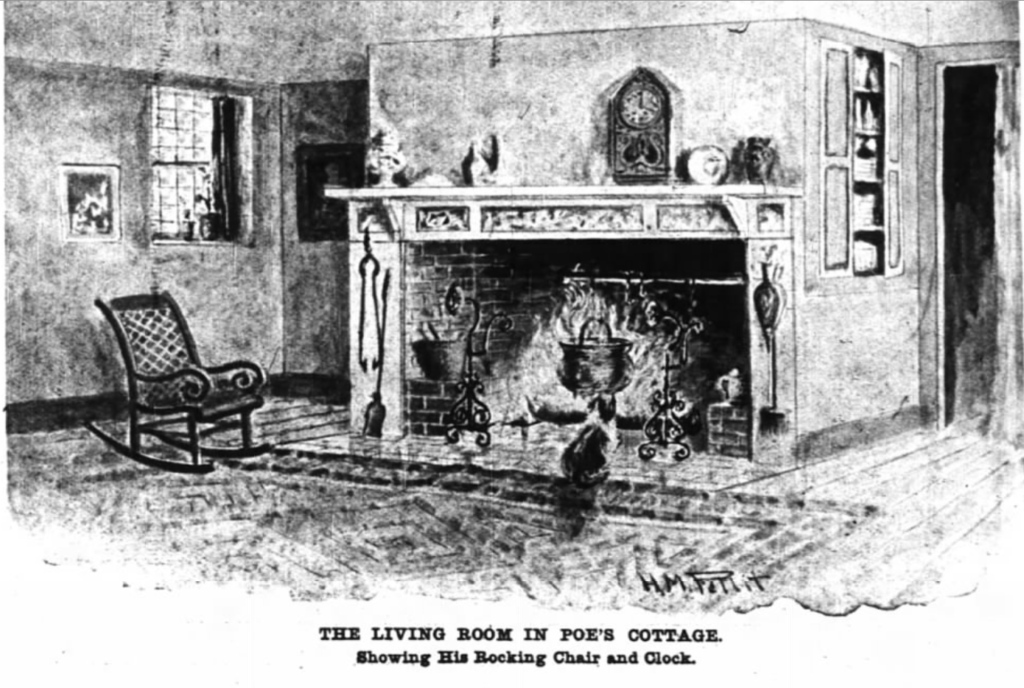
Sadly, Caterina’s tale does not have a happy ending: she reportedly died of starvation when Virginia’s mother, Maria Clemm (also Poe’s aunt), deserted the cat after Poe died in October 1849. But considering how many cats led deplorable lives in antebellum New York City, Caterina had a good life in the Bronx while Poe was alive and caring for her.
Poe Cottage: From Valentine to Victor
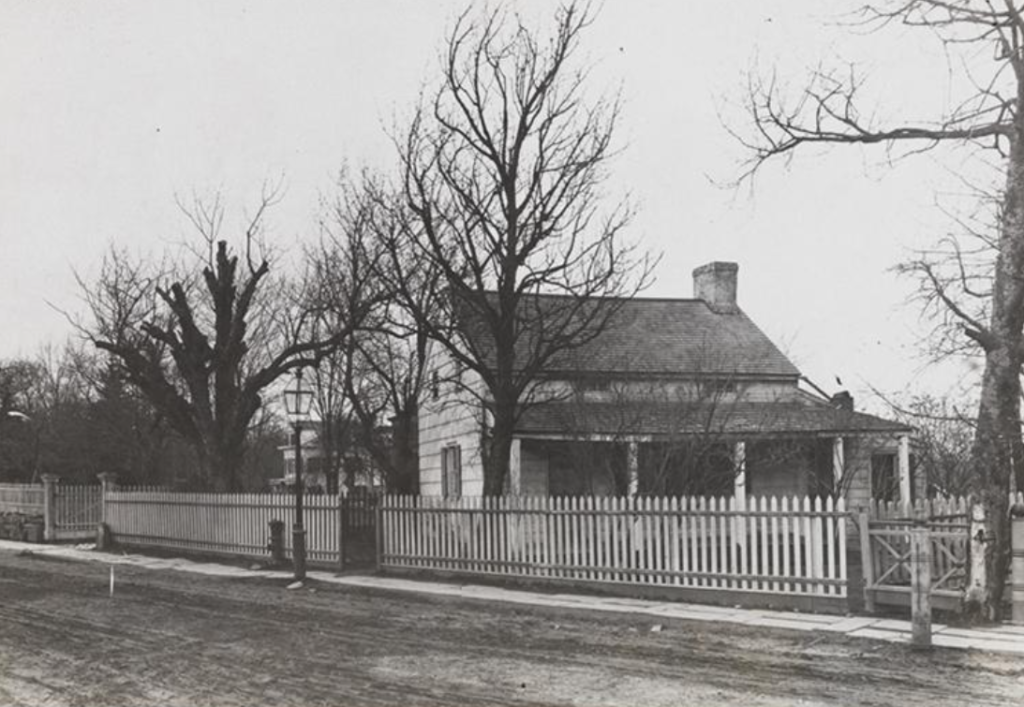
The tiny cottage on Kingsbridge Road in Fordham was reportedly built in 1812 by John Wheeler on lands belonging to John B. Valentine, whose family, including the Cromwell family by marriage, owned large estates in the neighborhood.
Poe paid about $100 a year for the cottage, which had previously served as a field hands residence. The Valentines occupied a home across the way on present-day Briggs Avenue. The Valentine family often shared vegetables and milk with Poe and his family.
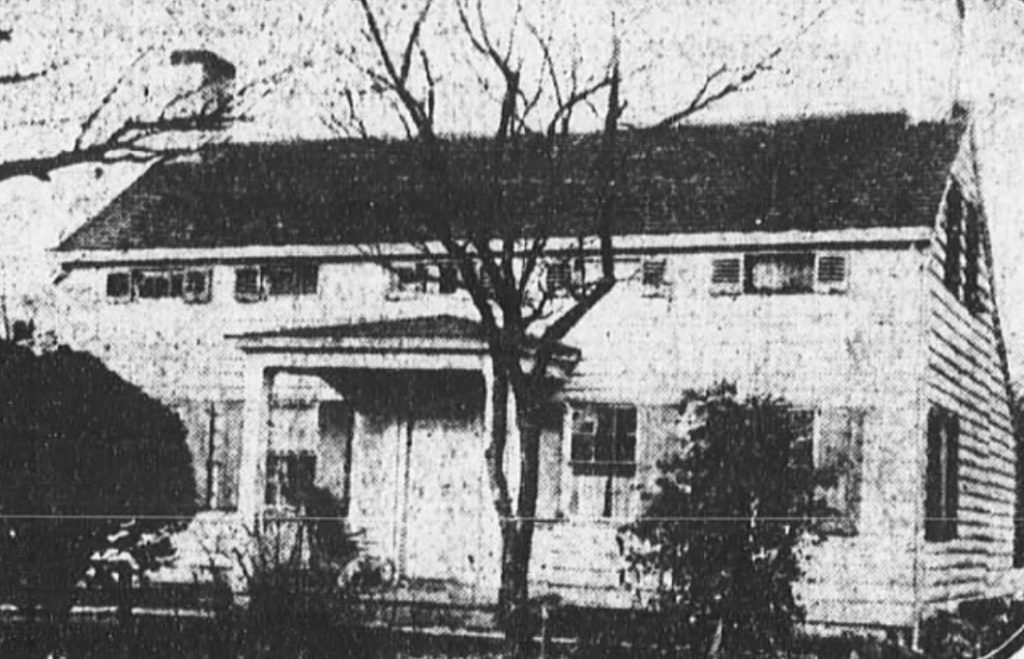
During the 19th century, the Poe Cottage had several owners. James Coles, a blacksmith, first purchased the cottage from the Valentine family. It was later owned by Henry Stony, John Berrian, and Phillip Duffey; Duffey also owned the old Fordham Hotel, beginning in 1854.

In 1889, three years after a large auction, the land about Poe Cottage was laid out in building lots. William Fearing Gill, author of the book “The Life of Edgar Allan Poe,” purchased the cottage and surrounding lands to save it from destruction.
Gill sold the cottage to brothers Patrick and Charles Kary, who in turn sold the house at auction to Austin Ford (about 1890). Ford sold it to Dr. E. J. Chauvet, DDS, who saw the cottage as a good investment opportunity (for many years, he said he would not sell the cottage for anything less than $10,000).
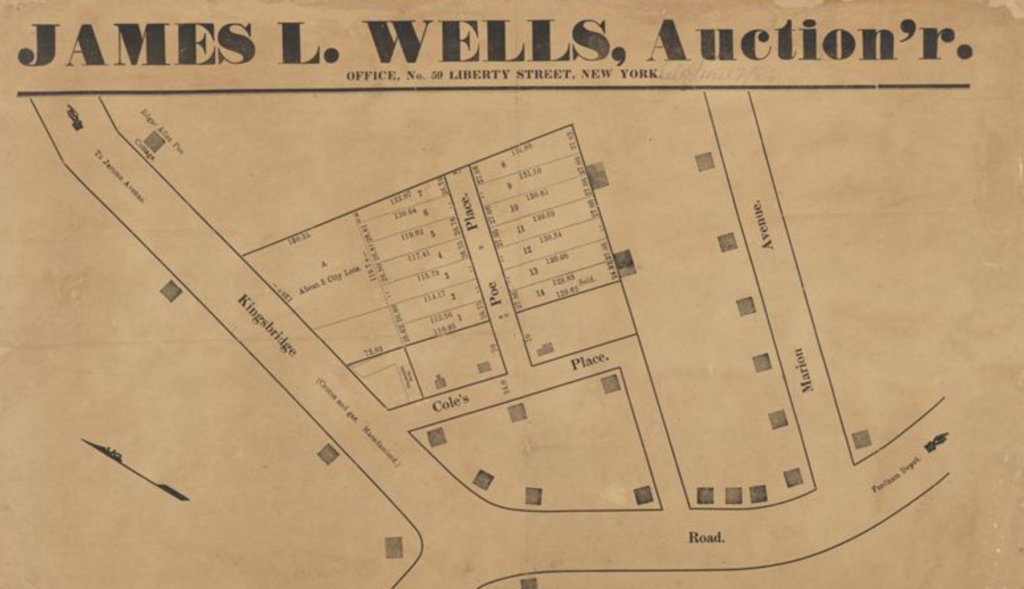
Dr. Chauvet, a dentist, built his own house near the cottage while renting Poe Cottage for a source of income. When the cottage had to be moved about 25 feet in 1896 to make room for the widening of Kingsbridge Road, it practically touched Chauvet’s own house.
One of Dr. Chauvet’s tenants was Mr. Healy, a stonecutter who lived in the cottage with his family when the cottage was smack next to Dr. Chauvet’s house (this may be Mr. Healy in the photo below).
One day in April 1905, while the Healys were living there, a reporter with camera in hand came looking for the cottage.
“Wait till I shoo that darned cat away,” a young boy told the reporter as he focused his camera on the tiny white cottage.
“Stop!” the reporter yelled, but the young buy chased the cat away, not having a clue why the reporter wanted the black cat to remain on the porch while he took the photo.
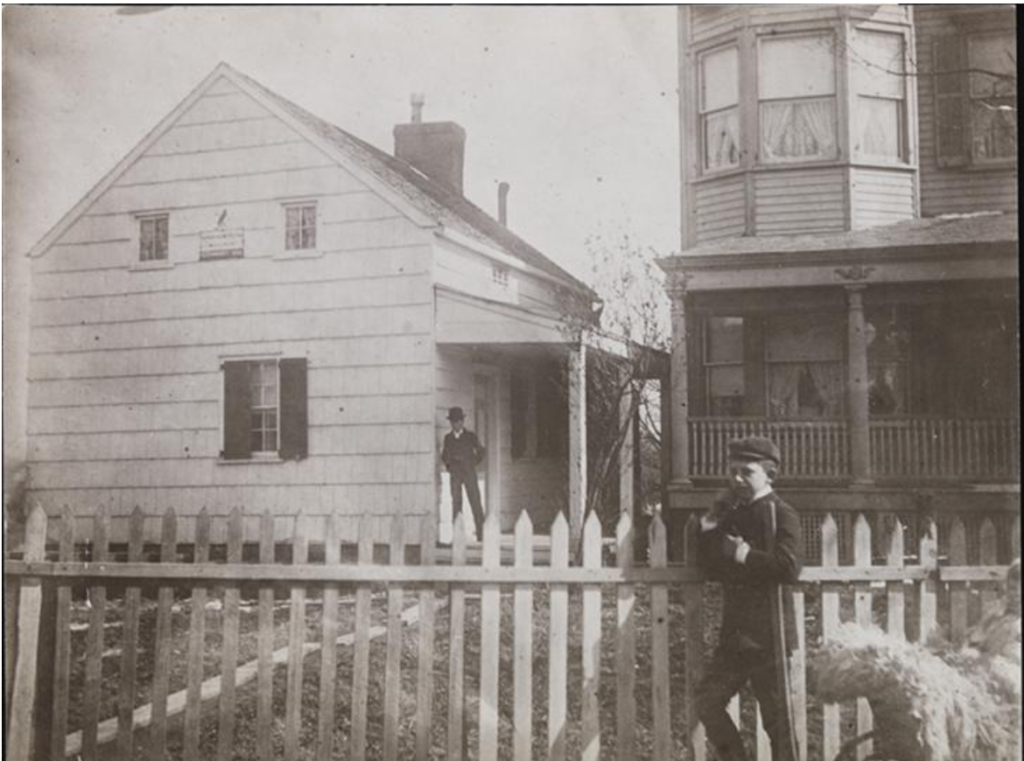
In 1913, 11 years after New York City created Poe Park, the city acquired the cottage for $3,000. The city paid an additional $2,000 to move the house 450 feet north of its original location to the northeast corner of the new park, near the Grand Concourse and East 193rd Street.
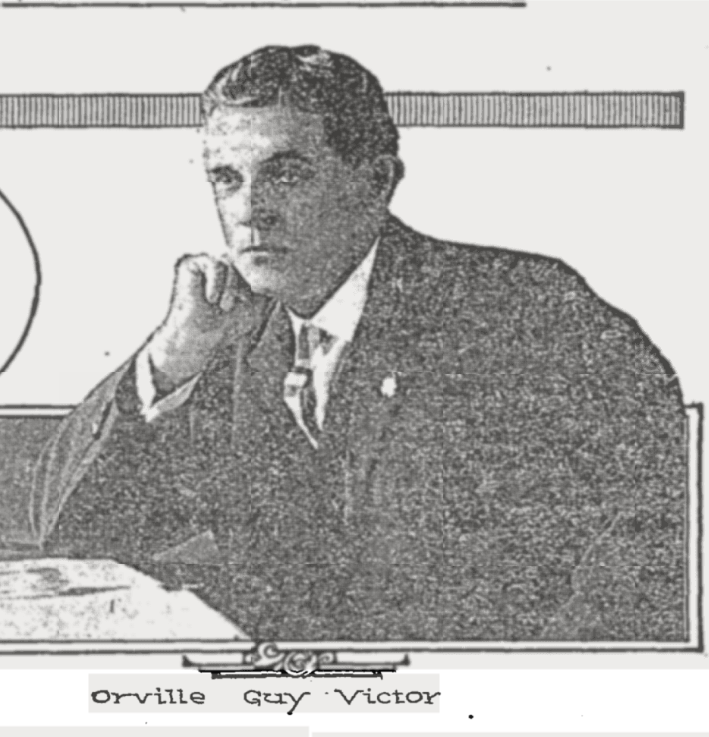
Upon acquiring the cottage, the city searched for a couple or small family who would be interested in keeping the cottage open to visitors and caring for it in lieu of rent. Oliver Guy Victor, a struggling poet who had advocated for the cottage’s removal to the park, jumped on the opportunity.
Orville, his wife, and their daughter, Marian, moved into Poe Cottage on November 5, 1913. Ten days later, the cottage was opened to the public. The small museum had few visitors at first, but by 1915, the Victors were receiving 60 to 75 visitors a day.
The Victor family lived in the upper rooms of the cottage. They also had access to the basement, which was added for their use. The basement contained the family’s kitchen, dining room, and pantry, and also included a modern furnace for a steam heating system.
One day in 1915, a visitor asked if the black cat walking about the museum was Poe’s cat. No, the Victors said, the cat was not a Poe cat nor the ghost of Caterina. He was the pet of the Victors, and his name was Jig. (Did the Victors bring the cat to the cottage, or could this have been the same cat that lived there with the Healy family in 1905?)

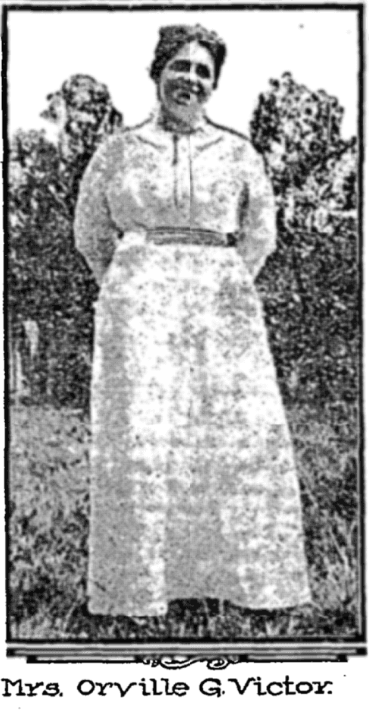
Aside from this cameo appearance in The New York Times in August 1915, nothing else has been reported about Jig–at least nothing I can find. Perhaps, though, this black cat was also a muse for a poet.
Like Poe, Orville Victor was a struggling writer, and he often burned the candle at both ends to support his family. In January 1914 he suffered a nervous breakdown and was sent to a sanitarium on Long Island for 18 months.
During that time, Mrs. Victor became a champion for Poe, doing all she could to turn an empty cottage into a tribute to the poet who wrote “The Bells, “Annabel Lee,” the “The Cask of Amontillado” while living there.
Orville returned to the cottage in the spring of 1915. Working with the Bronx Society of Arts and Sciences, which was chiefly responsible for the purchase of the cottage and the creation of the park, he and his wife encouraged collectors of Poe memorabilia to lend their items to the museum. Poe’s rocking chair, bookcase, silverware, and other items began to fill Poe Cottage.
Poe’s cat, Caterina, had already crossed the rainbow decades before, but a cat named Fig took her place in the new Poe Cottage museum. The former home of Edgar Allan Poe was the perfect place for a black cat of Old New York.
